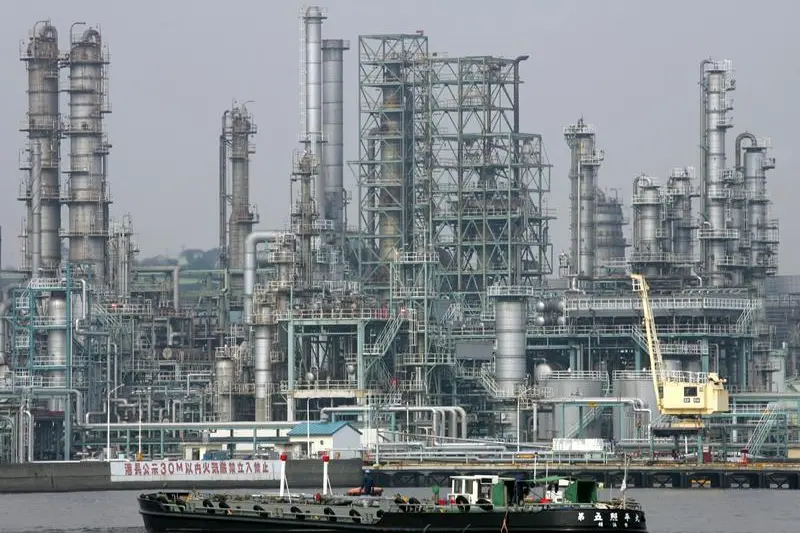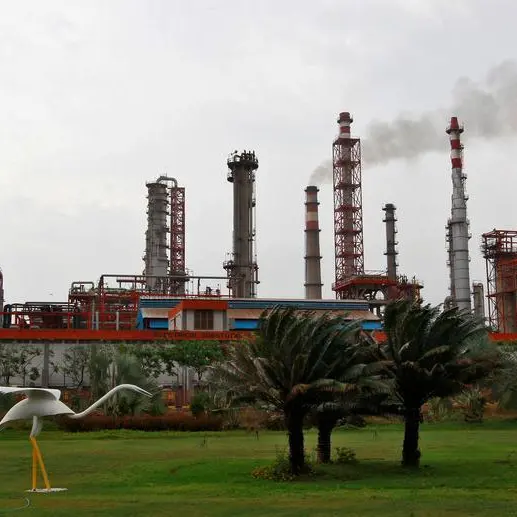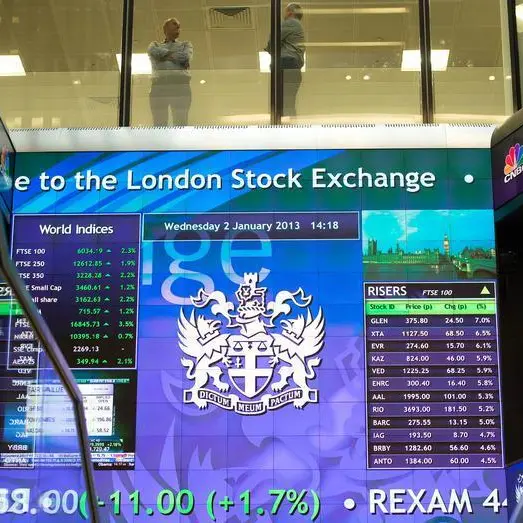PHOTO
(John Kemp is a Reuters market analyst. The views expressed are his own)
By John Kemp
LONDON, Feb 3 (Reuters) - The United States was one of the biggest sources of oil demand growth in 2015 but the outlook for 2016 is much more muted, according to official forecasters.
The U.S. transportation sector continues to send mixed signals about the strength of fuel demand at the end of 2015 and heading into 2016.
U.S. consumers are buying a record number of new vehicles, and more of them are choosing fuel-hungry crossover utility vehicles, according to market intelligence supplier Wards Auto.
The volume of traffic on U.S. roads has also hit a new record and is growing at the fastest rate for almost two decades, according to the Federal Highway Administration.
But the volume of freight transported by road, rail, air, barge and pipeline has been trending flat or lower since the end of 2014, according to the U.S. Bureau of Transportation Statistics.
The amount of freight hauled in November 2015 was actually 1.4 percent lower than in the corresponding month in 2014.
Rail freight movements were weaker in 2015, with the total number of rail cars and intermodal units moved across the network down 2.5 percent compared with 2014, according to the Association of American Railroads.
Road freight was fairly flat last year, ending three years of strong growth, according to the American Trucking Associations.
"I remain concerned about the high level of inventories throughout the supply chain," the association's chief economist warned in a statement to the media last month.
"The total business-to-inventory sales ratio is at the highest level in over a decade, excluding the Great Recession period. This will have a negative impact on truck freight volumes over the next few months at least."
Sales of the heavy-duty Class 7 and Class 8 trucks employed for most freight movements ended last year on a soft note according to Wards, down from the end of 2014.
Stocks of unsold heavy duty trucks at manufacturers and dealerships have risen steeply as sales fell towards the end of 2015.
At the end of December 2015, there was a 70-day supply of Class 8 trucks, up from 43 days at the end of December 2014, according to Wards.
The data on vehicle sales and miles driven is consistent with other signs of a two-speed economy in which demand from consumers remains strong while industry-related demand has weakened.
FUEL CONSUMPTION
Data on fuel consumption tells the same tale of a two-speed economy.
The volume of gasoline supplied to domestic customers between January and November was up 2.7 percent compared with the same period in 2014, according to the U.S. Energy Information Administration (EIA).
But the volume of low-sulphur distillate fuel oil, which includes the diesel used by trucks and trains, supplied to domestic customers was flat compared with 2014.
The growth in distillate consumption has been slowing since early 2015 and turned persistently negative from May onwards (
http://tmsnrt.rs/1P66zKw
).
Gasoline consumption, on the other hand, has been growing strongly for most of 2015, at some of the fastest rates since before the recession (
http://tmsnrt.rs/1P66tCB
).
More recently, however, there have been some signs the growth in gasoline consumption is moderating, with smaller year- on-year gains in both October and November.
Gasoline consumption showed only modest year-on-year gains in December was actually down in January, according to the more timely but less reliable weekly estimates prepared by the EIA (
http://tmsnrt.rs/1P66BSA
).
Diesel demand looks set to remain subdued for at least the next few months as U.S. manufacturers, distributors and retailers struggle to cut excess inventories and deal with softer industrial demand (
http://tmsnrt.rs/1P66Flr
).
The question is whether the slowdown in gasoline demand growth will be revised away, rebound, or turns into a longer pause.
The EIA is currently forecasting gasoline consumption will rise by 70,000 barrels per day in 2016, a much smaller increase than the 240,000 bpd increase in 2015.
By contrast, distillate consumption is predicted to increase by 80,000 bpd in 2016, after declining by the same amount in 2015.
Overall, total U.S. liquid fuels consumption is predicted to rise by 160,000 bpd, down from 270,000 bpd in 2015 ("Short-Term Energy Outlook", EIA, Jan 2016).
GLOBAL OUTLOOK
During 2015, oil consumption in the United States increased almost 300,000 bpd according to the International Energy Agency (IEA).
Increased fuel consumption in the United States accounted for one-sixth of the global increase in oil demand last year of 1.7 million bpd, according to the IEA.
The rest came from China (+600,000 bpd), Europe (+220,000 bpd) and India (+220,000 bpd).
The IEA is predicting more limited growth in oil demand from the United States in 2016, with consumption expected to rise by just 110,000 bpd ("Oil Market Report", IEA, December 2015).
Globally, the IEA is predicting oil demand will increase by just 1.2 million bpd in 2016, which would in line with the long-term average but a marked slowdown from 2015.
Essentially all the growth in oil demand this year is expected to come from emerging markets, according to the IEA.
The agency is forecasting increases of 350,000 bpd from China, 230,000 bpd from India and small gains from a variety of other countries including Saudi Arabia (+40,000 bpd) and Iran (+40,000 bpd).
The outlook for fuel demand from emerging markets this year is clouded by the cross-cutting influences of long-term urbanisation and development (which should support robust consumption growth) and short-term weakness owing to the slump in commodity prices and slowdown in global trade.
The one unambiguously positive factor for global oil demand is the winter of 2016/17 should be colder than winter 2015/16 as the current record El Nino fades.
(Editing by David Evans) ((john.kemp@thomsonreuters.com; +44 207 542 9726 and on twitter @JKempEnergy))
Keywords: OIL DEMAND/KEMP
By John Kemp
LONDON, Feb 3 (Reuters) - The United States was one of the biggest sources of oil demand growth in 2015 but the outlook for 2016 is much more muted, according to official forecasters.
The U.S. transportation sector continues to send mixed signals about the strength of fuel demand at the end of 2015 and heading into 2016.
U.S. consumers are buying a record number of new vehicles, and more of them are choosing fuel-hungry crossover utility vehicles, according to market intelligence supplier Wards Auto.
The volume of traffic on U.S. roads has also hit a new record and is growing at the fastest rate for almost two decades, according to the Federal Highway Administration.
But the volume of freight transported by road, rail, air, barge and pipeline has been trending flat or lower since the end of 2014, according to the U.S. Bureau of Transportation Statistics.
The amount of freight hauled in November 2015 was actually 1.4 percent lower than in the corresponding month in 2014.
Rail freight movements were weaker in 2015, with the total number of rail cars and intermodal units moved across the network down 2.5 percent compared with 2014, according to the Association of American Railroads.
Road freight was fairly flat last year, ending three years of strong growth, according to the American Trucking Associations.
"I remain concerned about the high level of inventories throughout the supply chain," the association's chief economist warned in a statement to the media last month.
"The total business-to-inventory sales ratio is at the highest level in over a decade, excluding the Great Recession period. This will have a negative impact on truck freight volumes over the next few months at least."
Sales of the heavy-duty Class 7 and Class 8 trucks employed for most freight movements ended last year on a soft note according to Wards, down from the end of 2014.
Stocks of unsold heavy duty trucks at manufacturers and dealerships have risen steeply as sales fell towards the end of 2015.
At the end of December 2015, there was a 70-day supply of Class 8 trucks, up from 43 days at the end of December 2014, according to Wards.
The data on vehicle sales and miles driven is consistent with other signs of a two-speed economy in which demand from consumers remains strong while industry-related demand has weakened.
FUEL CONSUMPTION
Data on fuel consumption tells the same tale of a two-speed economy.
The volume of gasoline supplied to domestic customers between January and November was up 2.7 percent compared with the same period in 2014, according to the U.S. Energy Information Administration (EIA).
But the volume of low-sulphur distillate fuel oil, which includes the diesel used by trucks and trains, supplied to domestic customers was flat compared with 2014.
The growth in distillate consumption has been slowing since early 2015 and turned persistently negative from May onwards (
Gasoline consumption, on the other hand, has been growing strongly for most of 2015, at some of the fastest rates since before the recession (
More recently, however, there have been some signs the growth in gasoline consumption is moderating, with smaller year- on-year gains in both October and November.
Gasoline consumption showed only modest year-on-year gains in December was actually down in January, according to the more timely but less reliable weekly estimates prepared by the EIA (
Diesel demand looks set to remain subdued for at least the next few months as U.S. manufacturers, distributors and retailers struggle to cut excess inventories and deal with softer industrial demand (
The question is whether the slowdown in gasoline demand growth will be revised away, rebound, or turns into a longer pause.
The EIA is currently forecasting gasoline consumption will rise by 70,000 barrels per day in 2016, a much smaller increase than the 240,000 bpd increase in 2015.
By contrast, distillate consumption is predicted to increase by 80,000 bpd in 2016, after declining by the same amount in 2015.
Overall, total U.S. liquid fuels consumption is predicted to rise by 160,000 bpd, down from 270,000 bpd in 2015 ("Short-Term Energy Outlook", EIA, Jan 2016).
GLOBAL OUTLOOK
During 2015, oil consumption in the United States increased almost 300,000 bpd according to the International Energy Agency (IEA).
Increased fuel consumption in the United States accounted for one-sixth of the global increase in oil demand last year of 1.7 million bpd, according to the IEA.
The rest came from China (+600,000 bpd), Europe (+220,000 bpd) and India (+220,000 bpd).
The IEA is predicting more limited growth in oil demand from the United States in 2016, with consumption expected to rise by just 110,000 bpd ("Oil Market Report", IEA, December 2015).
Globally, the IEA is predicting oil demand will increase by just 1.2 million bpd in 2016, which would in line with the long-term average but a marked slowdown from 2015.
Essentially all the growth in oil demand this year is expected to come from emerging markets, according to the IEA.
The agency is forecasting increases of 350,000 bpd from China, 230,000 bpd from India and small gains from a variety of other countries including Saudi Arabia (+40,000 bpd) and Iran (+40,000 bpd).
The outlook for fuel demand from emerging markets this year is clouded by the cross-cutting influences of long-term urbanisation and development (which should support robust consumption growth) and short-term weakness owing to the slump in commodity prices and slowdown in global trade.
The one unambiguously positive factor for global oil demand is the winter of 2016/17 should be colder than winter 2015/16 as the current record El Nino fades.
(Editing by David Evans) ((john.kemp@thomsonreuters.com; +44 207 542 9726 and on twitter @JKempEnergy))
Keywords: OIL DEMAND/KEMP












